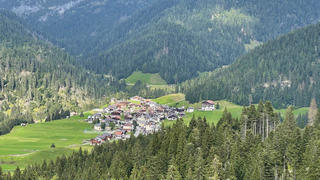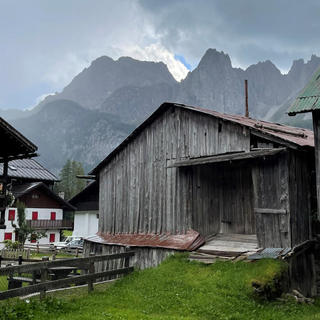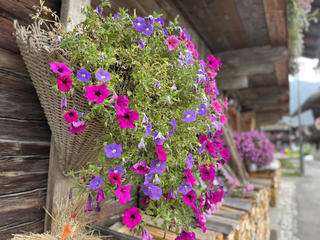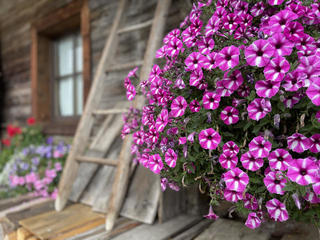
Cima
Cima is a village that the Sappada's residents have always seen as separate and more independent than any other village. The etymology of Zepodn seems to refer to the flood plain on which the settlement is built and, probably, it is also the origin of the ltalian name Sappada.
The historical center is concentrated in the Northeastern end of a large flood plain that overlooks the Sappada valley from an average altitude of 1297 m. There are reasons to believe that the first settlement in the Sappada valley was located here, although this is purely a hypothesis.
The layout of the buildings is different from that of all the other villages. Because of the flat ground, the houses and the rustic buildings are evenly spread out, forming an intricate web of streets and alleys.
Cima Sappada has its own small church, built in 1732 and enlarged in 1773, known as Zepodarkirche.The church is dedicated to St. Oswald to whom two other churches are also dedicated: the church of Kartitsch (Gailtal) and the parish church of the nearby linguistic island of Sauris. Cima Sappada also has five niche-chapels: four in the meadows around the church (Fèlixnmaindl, Sìndarmaindl, Gràznmaindl, Gràntnmaindl) and a fifth (Plòtznmaindl) in Plòtzn.
The village has numerous noteworthy old buildings, including the Kratter s'Gàigars house. lt is a 17th century masonry manor with a vaulted foyer and a small mullioned window on the Eastern wall.
Among the various traditional wooden buildings, a particularly interesting one is the 18th century s'Gea(d)ratn - Schpanglars house, inside of which one can still find an old stone fireplace with a smoke room. The three-story s'Vucsn - s'Schtanign - s'Taitschn house (XVII c.), s'Zenzn Schuischtars house (XVIII c.) and Sìndar house (1806) are also interesting, and so are the classic style houses such as the Vòltans - s'Pleschn house (1777) and the Lanner house. Finally, worth noting are the Graz and the Padrousn s'Pleschn houses, otherwise classic style homes with an unusual longitudinal corri dor.
Not far from the residential area, along the Piave river, a saw mili and an old water mill bear witness to the traditional economie activities of the valley, now disappeared.







